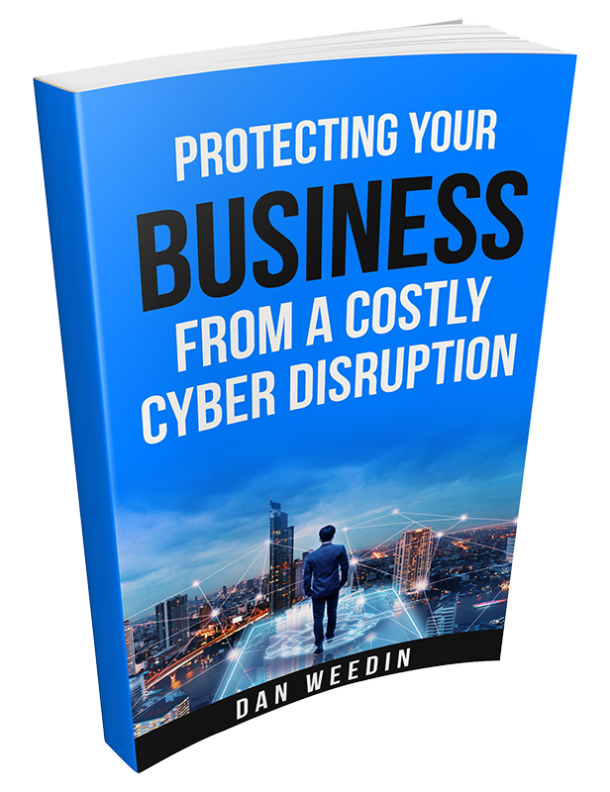 From my December column for the Kitsap Business Journal…
From my December column for the Kitsap Business Journal…
Hola. Me llamo Dan Weedin. Como esta usted?
Okay, that’s NOT the bilingual I meant, but I wanted to take this brief opportunity to show off and grab your attention.
Being bilingual is critical to your success as an executive, business leader, entrepreneur, and sales professional. Unfortunately, most of you only speak one “language,” and in so doing leave others confused and money on the table. Allow me to explain…
Coming out of the insurance and risk mitigation world, we have our own special jargon. We like to talk about exposures, hazards, perils, exclusions, redundancy, and coinsurance. We reference ITV, ACV, BI, RC, BOR, and DIC. It’s clear to us, but gibberish to normal people. Unfortunately, I’ve watched professionals in my industry use terms and acronyms like this when speaking with current and prospective clients. To say this is painful for their listeners is an understatement. What’s worse is that important information is being misinterpreted and rejected because the message is flawed. They are speaking the wrong language.
I am on the school board in my community. In the beginning, I was inundated with academic-speak. I thought that insurance jargon was confusing. Hang around a school district for a while and you’ll feel like you’re in a different country! The perceived lack of “transparency” and communication to the public is really a misnomer. They are speaking the wrong language.
This affliction is rampant in all industries, yet gets pervasive when the content gets more complex. CFOs, financial executives, financial planners, insurance agents, and attorneys may lead the pack. In an effort to be influential, they lead with methodology instead of results; and speak in their language rather than the intended audience’s. The results are misunderstandings, frustration, extra work, lost time, lost opportunity, and stress. If you want to be influential, you need to become bilingual. You must speak in a manner that is easy to comprehend and clearly states your call to action.
So let’s get started on getting you a quick and simple Business Language 101 lesson! Here are my seven techniques to becoming bilingual and influential:
Translate your language into their language. Stop using jargon that only you know. Find other words to be descriptive. If you must use industry jargon, take the time to explain it. Drop all acronyms, even if you think they know it. If it’s highly technical, make it simple. You already have credibility; your goal is now results.
Strategic or tactical? If you’re speaking to the CEO or business owner, you need to be strategic. Strategic is the WHY. This means big picture; visionary; results; and ramifications. If you’re speaking to vendors, direct reports, or employees, you need to be tactical. This is the HOW. This means techniques, specificity, and instructional. Know your audience and what motivates them to act.
Be results-oriented. Too many of my colleagues get caught up in their methodology. Most people don’t care about the intricacies of how the car starts. They only care about the results of the car starting. Change your language to results — increased sales; reduced risk; improved morale; decreased drama; enhanced product. If you stay focused on results over methodology, people will be more engaged.
Become a storyteller. Since we were children, we humans have always cherished being told a story. This is even truer in a business environment. Become adept at taking personal stories and using them as a metaphor for a business outcome. I promise that people will remember your message more clearly if you have a witty story attached to it. The best speakers in the world always use stories. You should, too.
Add humor. No cheesy jokes; I’m talking about light and appropriate humor to add sizzle to your steak. Stories are the best way to uncover your humor. People learn when they laugh. That’s why advertisers use it. Have some fun and practice this. You will become an object of interest if you do, and that is part of being influential.
Limit technology. Only use a slide presentation if it adds value to your presentation through images. Images. Don’t fill space with bullet points and text. Don’t read to people. I guarantee they already know how! The focus should be on your words, not words on a screen. Simple graphs, charts and images can enhance your message. Use technology for good, not evil.
Call to action. Always leave with a call to action. Even in a one-on-one conversation, you need to be direct and specific about what you want to happen next. Never assume that your verbiage implied next steps. Be clear, concise and direct.
My professional mentor Alan Weiss espouses that language controls conversations; conversations control relationships; and relationships control business. If you’re going to maximize your influence in business, you must maximize your relationships. The best way to do that is to be influential. You can’t be influential if you’re not understood. Become bilingual by turning the complex into simple, and your results will be increased influence, enhanced credibility, and improved outcomes.
Hasta la vista, baby!
© 2013 Dan Weedin. All Rights Reserved
Follow on Twitter – @danweedin

